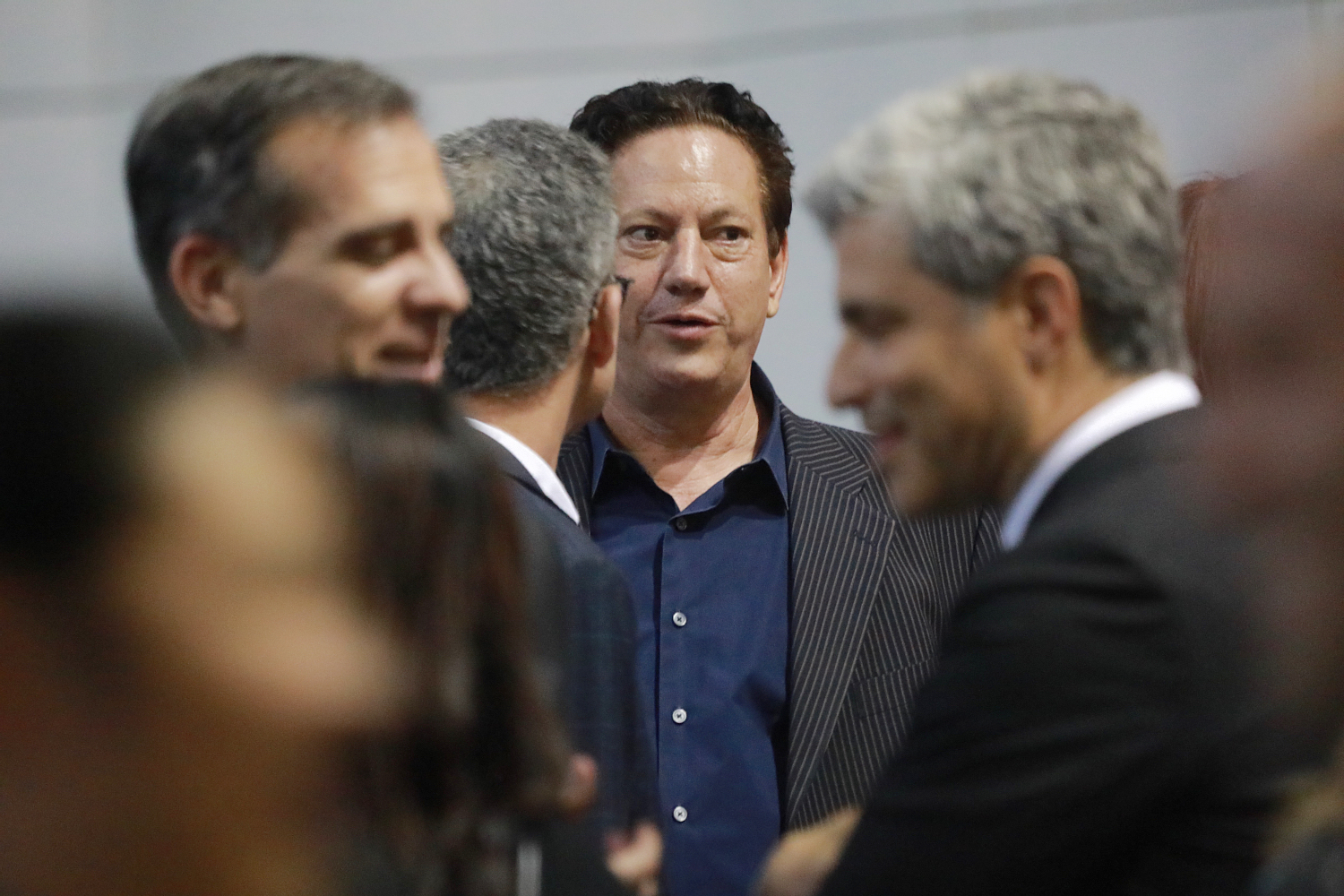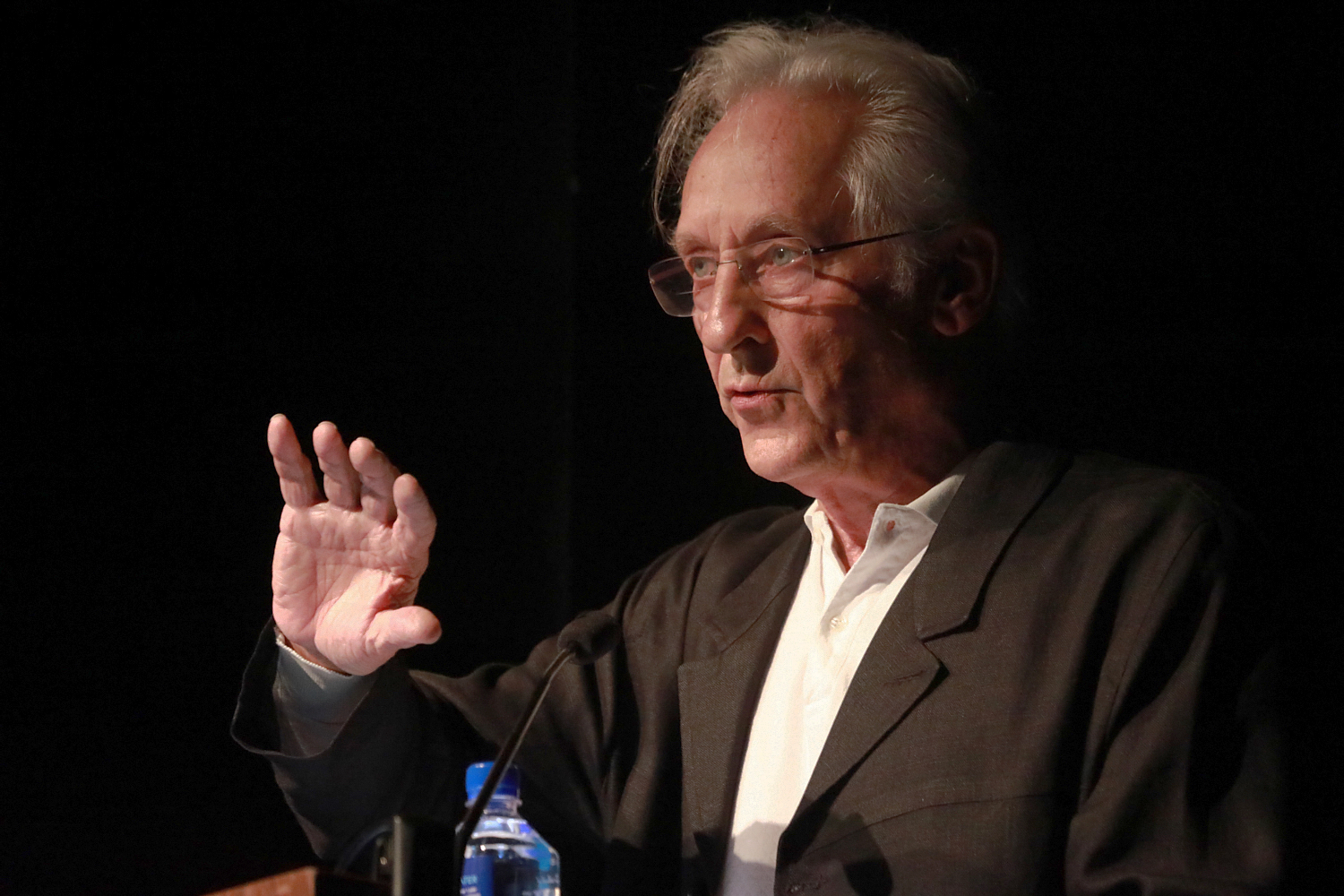“Ed Moses has been central to the history of art making in Los Angeles for more than half a century,” Michael Govan, director of the Los Angeles County Museum of Art, said in a statement.
Architect Frank Gehry, one of Moses’ closest friends, met the painter when he was just starting out.
“He opened a lot of doors for me, doors of thinking, to a way of looking at life, of thinking about work and creativity and freedom and expressing oneself — taking chances,” Gehry said. “He was the first person that was in that world that sort of took me under his wing. He was very supportive.
“I think he influenced others by his sense of freedom, his personality, his willingness to step into the unknown. He epitomized that. … I think of him as my north star.”
Gallerist William Turner, who represented Moses, described the artist as “a living link to the inception of the contemporary art scene in Los Angeles from the late ’50s to the present.”
“He was a striking presence and force of nature to be reckoned with, especially in his later years. If anything, he went guns a-blazing into his old age and seemed to speed up instead of slow down. He loved painting, for him to be alive was to paint, it’s how he marked his existence.”
In the catalog of Moses’ 1996 retrospective exhibition of paintings and drawings at Los Angeles’ Museum of Contemporary Art, critic John Yau wrote, “The diversity he has achieved is unparalleled among contemporary abstract artists. And within this diversity is an emotional range that is also unparalleled.”
A spiritual descendant of the Abstract Expressionists and a student of Buddhism who meditated daily, Moses blazed his own trail to aesthetic truth. Working with unconventional materials and tools, including mops, hoses and rubber scrapers, he painted behind his house in Venice — where he lived for more than 30 years — on an open-air concrete slab and in a barn-like studio. As his career evolved, he produced intricately crafted diagonal grids as well as splashy gestural works.

